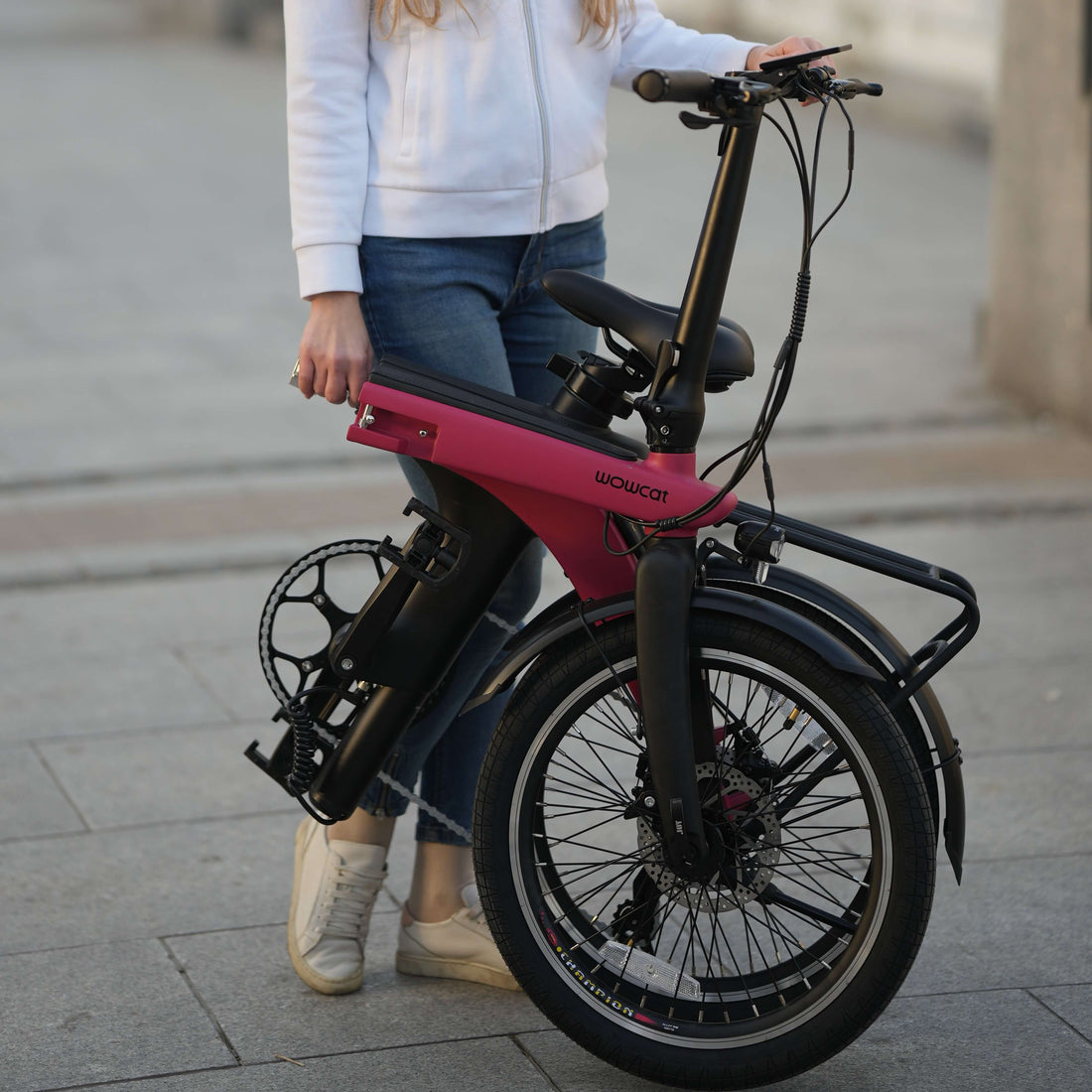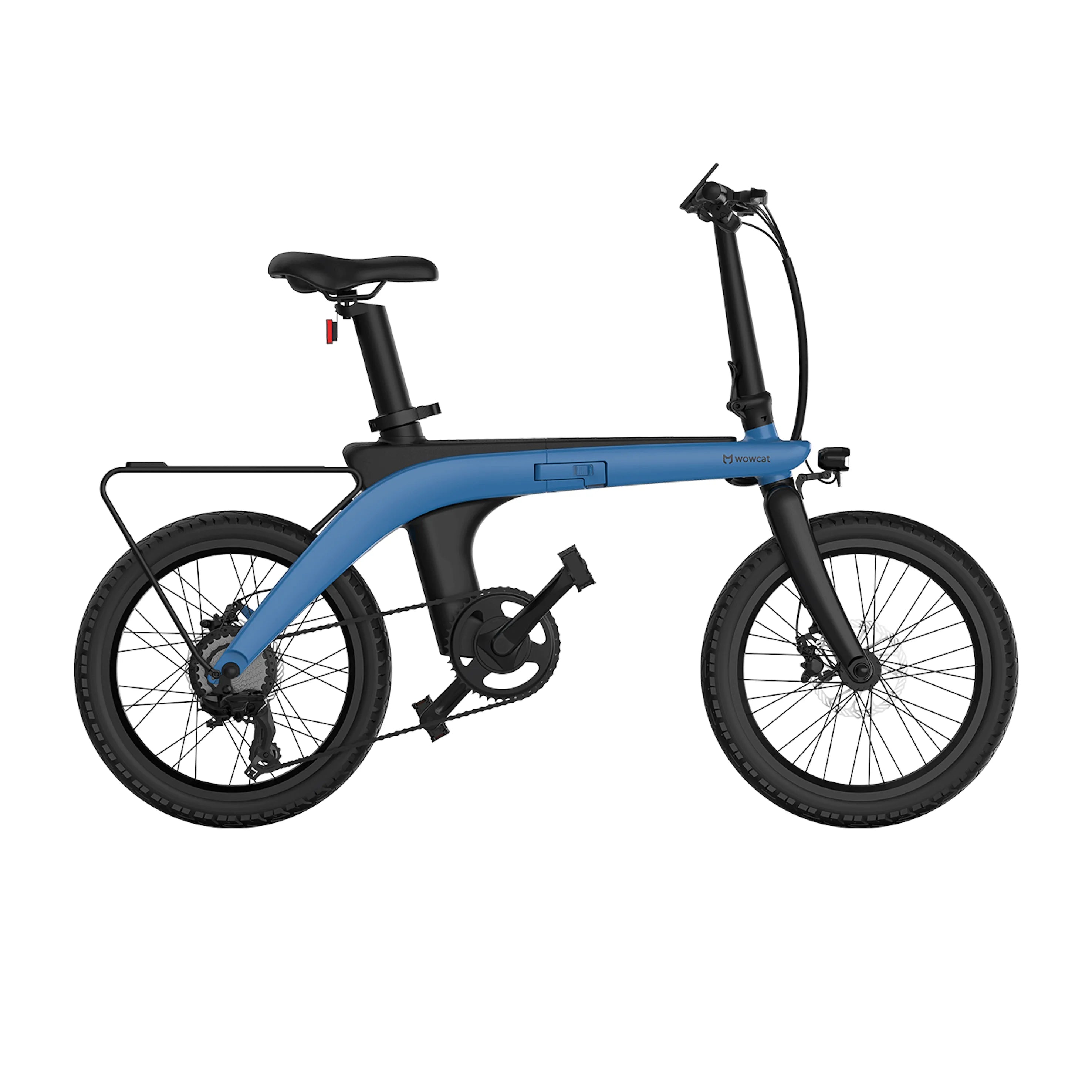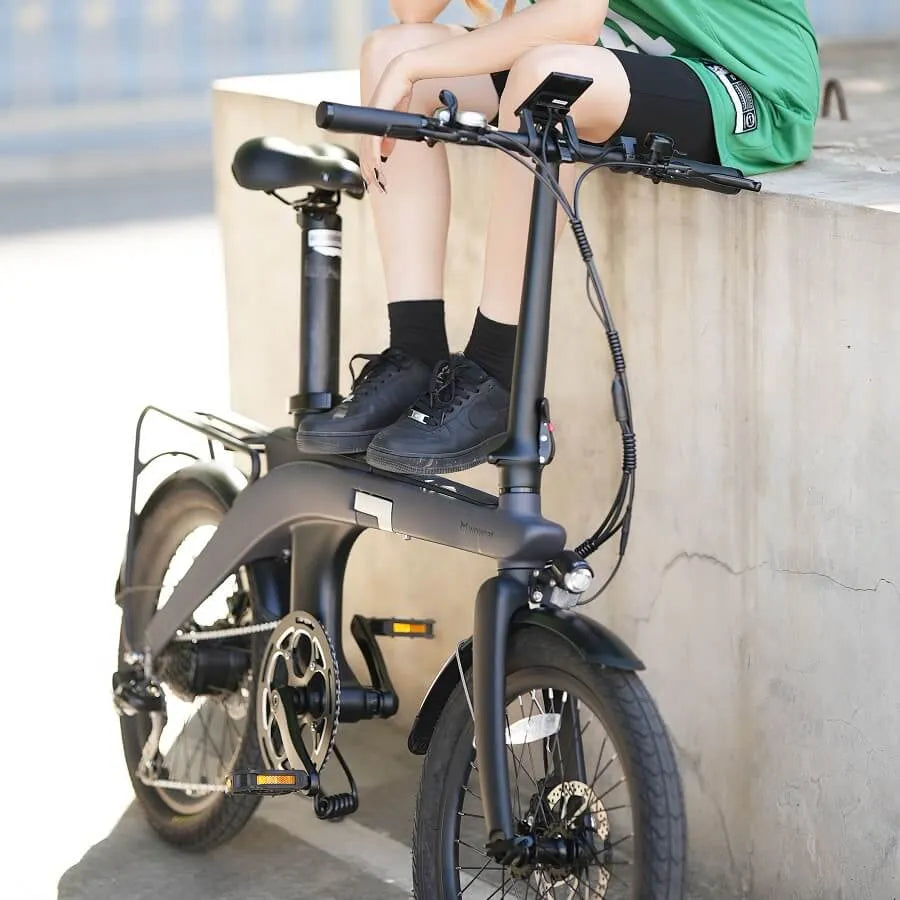Why Getting an E-Bike in 2024 is Crucial Like Never Before
In the dynamic landscape of urban living, the quest for sustainable and efficient modes of transportation has never been more critical. As we navigate the evolving challenges of congestion, environmental concerns, and a growing emphasis on personal well-being, the spotlight on electric bikes (e-bikes) has intensified. In 2024, the year unfolds as a pivotal moment for individuals seeking a transformative shift in their commuting habits. This article delves into the myriad reasons why acquiring an e-bike in 2024 is not just a choice but a crucial decision with far-reaching implications for our daily lives and the broader community. Join us as we explore the compelling factors that make e-bikes an indispensable tool for navigating the demands of the modern world.

What is the Electric Bicycle?
An electric bicycle, commonly known as an e-bike, is a bicycle equipped with an integrated electric motor that assists with propulsion. Unlike traditional bicycles, e-bikes allow riders to augment their pedaling power with the assistance of the electric motor, providing an extra boost to make cycling easier, especially on inclines or during extended journeys.
One of the key advantages of e-bikes is that they offer a versatile and eco-friendly alternative to traditional transportation, promoting a more sustainable and efficient mode of commuting. They are gaining popularity globally as a means to reduce reliance on fossil fuels, alleviate traffic congestion, and encourage a healthier and more active lifestyle. E-bikes can be particularly appealing to a wide range of individuals, from daily commuters looking to shorten their travel time to recreational cyclists seeking an extra boost for longer rides.
The Environmental Impact
The environmental impact of electric bicycles (e-bikes) in 2024 cannot be overstated, as they emerge as a key player in the global shift towards sustainable transportation. In the face of escalating concerns about climate change, air pollution, and the depletion of natural resources, e-bikes offer a compelling solution with notable environmental benefits.
Reduced Carbon Emissions:
E-bikes are inherently more eco-friendly than traditional gasoline-powered vehicles. By relying on an electric motor and battery, e-bikes produce zero tailpipe emissions. As cities worldwide grapple with air quality issues, the adoption of e-bikes becomes a crucial step in curbing carbon emissions and improving urban air quality.
Energy Efficiency:
E-bikes are known for their energy efficiency, with the electric motor providing a supplemental boost to the rider's pedaling efforts. This efficiency translates to fewer energy resources consumed per mile traveled compared to conventional vehicles. As the energy sector increasingly transitions to renewable sources, the overall carbon footprint of e-bikes continues to decrease.
Reduced Traffic Congestion:
E-bikes contribute to alleviating traffic congestion, a factor often underestimated in its environmental impact. By offering a faster and more flexible alternative to traditional commuting methods, e-bikes help reduce the number of vehicles on the road, lowering overall traffic-related emissions and creating a smoother flow of transportation.
Sustainable Materials and Manufacturing:
Many e-bike manufacturers are recognizing the importance of sustainable practices in their production processes. From the use of recycled materials to more energy-efficient manufacturing methods, the e-bike industry is making strides toward minimizing its environmental footprint from the initial stages of production.
Encouraging Sustainable Lifestyles:
Beyond their direct environmental impact, e-bikes contribute to fostering sustainable lifestyles. By promoting cycling as a viable and accessible mode of transportation, e-bikes encourage individuals to opt for a low-impact, energy-efficient means of getting around, thereby reducing their overall carbon footprint.
In the current environmental landscape, where every decision counts, the adoption of e-bikes in 2024 represents a proactive choice towards a cleaner, greener future. As individuals and communities embrace these electrically assisted bicycles, they collectively contribute to a more sustainable and environmentally conscious way of navigating the modern world.
Cost-Effectiveness
In the year 2024, the appeal of electric bicycles (e-bikes) extends beyond their environmental advantages; their cost-effectiveness stands out as a compelling reason for individuals to consider making the switch. Here's a closer look at how e-bikes prove to be financially savvy in various aspects:
Reduced Fuel and Maintenance Costs:
One of the primary cost benefits of e-bikes is the elimination of traditional fuel expenses. While gasoline prices continue to fluctuate, e-bikes run on electricity, which is generally more affordable and stable in cost. Additionally, e-bikes have fewer moving parts compared to traditional vehicles, resulting in lower maintenance costs over time.
Affordable Charging and Long Battery Life:
Charging an e-bike's battery is significantly cheaper than refueling a gas-powered vehicle. With advancements in battery technology, modern e-bike batteries boast longer life spans, reducing the frequency of replacements and associated costs. This longevity contributes to the overall cost-effectiveness of owning an e-bike.
Incentives and Subsidies:
In many regions, governments and local authorities are actively promoting the adoption of e-bikes through financial incentives and subsidies. These can include tax credits, rebates, or grants aimed at reducing the upfront cost of purchasing an e-bike, making them more accessible and cost-effective for potential buyers.
Reduced Commuting Expenses:
For daily commuters, the cost of transportation can add up quickly. E-bikes offer an economical alternative to traditional commuting methods, such as public transportation or owning a car. Riders can save on parking fees, public transit fares, and the ongoing expenses associated with maintaining a personal vehicle.
Employer Benefits:
Some forward-thinking employers are recognizing the advantages of e-bikes in promoting a healthier and more sustainable workforce. Workplace incentives, such as bike-sharing programs, subsidized e-bike purchases, or facilities for bike commuters, not only benefit employees but also contribute to the overall cost-effectiveness of adopting e-bikes on a broader scale.
Versatility and Multimodal Options:
E-bikes offer a versatile and flexible mode of transportation. Their ability to integrate with other forms of transit, such as trains or buses, provides users with cost-effective multimodal options. This can lead to reduced reliance on more expensive and less sustainable modes of transport for longer distances.
As we navigate the economic landscape of 2024, the cost-effectiveness of e-bikes becomes a pivotal factor in the decision-making process for individuals seeking efficient, affordable, and sustainable transportation solutions. The initial investment in an e-bike is increasingly viewed as a smart and strategic choice that pays dividends over time, aligning both with personal financial goals and the broader push towards sustainable living.
E-Bikes in Urban Planning
The integration of electric bicycles (e-bikes) into urban planning strategies in 2024 marks a progressive shift towards more sustainable, efficient, and inclusive urban mobility. As city planners grapple with the challenges of population growth, congestion, and environmental concerns, e-bikes emerge as a versatile and impactful tool for shaping the urban landscapes of the future.
Last-Mile Connectivity:
E-bikes play a pivotal role in addressing the "last-mile" challenge in urban transportation. By providing a quick and accessible solution for short-distance travel between transit stops and final destinations, e-bikes enhance overall connectivity within the urban infrastructure. This, in turn, promotes the use of public transportation and reduces dependence on private vehicles for short journeys.
Reducing Traffic Congestion:
With the ability to navigate through traffic more efficiently than traditional vehicles, e-bikes contribute significantly to reducing congestion in urban areas. Integrating dedicated bike lanes and bike-sharing programs into urban planning not only accommodates the growing popularity of e-bikes but also facilitates smoother traffic flow for all commuters.
Infrastructure Development:
Urban planning for e-bikes involves the creation and enhancement of cycling infrastructure. This includes the development of bike lanes, secure parking facilities, and charging stations strategically placed throughout the city. By investing in this infrastructure, cities can encourage more individuals to adopt e-bikes, fostering a sustainable and interconnected transportation network.
Environmental Considerations:
The incorporation of e-bikes into urban planning aligns with broader environmental goals. Cities are increasingly recognizing the need to reduce carbon emissions and improve air quality. Promoting e-bikes as a viable mode of transportation supports these objectives, contributing to a cleaner and greener urban environment.
Incentives and Regulations:
Urban planners can influence e-bike adoption by implementing incentives and regulations. This may include offering subsidies for e-bike purchases, creating policies that prioritize e-bike infrastructure in new developments, and establishing guidelines to ensure the safe coexistence of e-bikes with other modes of transportation.
Promoting Healthy Lifestyles:
Incorporating e-bikes into urban planning promotes active and healthy lifestyles. By encouraging cycling, cities can address public health concerns related to sedentary lifestyles and promote physical well-being. E-bikes, with their electric assist, make cycling more accessible to a broader demographic, including those who may face physical limitations.
Data Integration and Smart Mobility:
Leveraging technology, urban planners can integrate e-bikes into smart city initiatives. This involves using data analytics to optimize bike-sharing systems, monitor usage patterns, and identify areas for infrastructure improvement. Smart mobility solutions can enhance the overall efficiency of urban transportation systems.
In 2024, urban planners are recognizing that the integration of e-bikes into their strategies goes beyond addressing immediate transportation needs. It contributes to building more resilient, sustainable, and people-centric cities. By embracing e-bikes as a key element of urban planning, cities are taking a forward-thinking approach that aligns with the evolving needs and values of their communities.
The Future of Commuting
As we step into the future, the landscape of commuting is undergoing a transformative shift, driven by technological advancements, environmental consciousness, and a growing emphasis on efficiency. In 2024 and beyond, the future of commuting is characterized by several key trends that redefine how individuals move within and between urban centers:
Rise of Electric Mobility:
Electric vehicles, including electric bicycles (e-bikes), electric scooters, and electric cars, are becoming integral to the future of commuting. With a focus on reducing carbon emissions and promoting sustainable practices, cities are investing in charging infrastructure and incentivizing the adoption of electric modes of transport.
Integration of Multi-Modal Transportation:
The future of commuting is marked by a seamless integration of various transportation modes. Commuters are increasingly relying on a combination of options such as e-bikes, public transit, ridesharing, and walking. Cities are investing in infrastructure that facilitates smooth transitions between different modes, promoting a holistic and efficient commuting experience.
Smart Transportation Systems:
The rise of smart cities brings forth intelligent transportation systems that use data and technology to optimize traffic flow, reduce congestion, and enhance overall commuting efficiency. Commuters can access real-time information about transit schedules, traffic conditions, and the availability of shared transportation options through connected devices.
Flexible Work Arrangements:
The traditional 9-to-5 work structure is evolving, with more individuals adopting flexible work arrangements. Remote work, compressed workweeks, and flexible hours are reshaping commuting patterns. Commuters may choose to travel during off-peak hours, leading to a more evenly distributed demand on transportation infrastructure.
Micro-Mobility Solutions:
Micro-mobility solutions, including e-scooters, e-bikes, and compact electric vehicles, are gaining prominence for short-distance commuting. These nimble and eco-friendly options provide a convenient alternative to traditional modes of transport, particularly in crowded urban environments.
Autonomous and Connected Vehicles:
The future of commuting includes the integration of autonomous and connected vehicles. Self-driving cars and connected infrastructure aim to enhance safety, reduce traffic accidents, and optimize traffic flow. These advancements have the potential to redefine the entire commuting experience, offering a mix of convenience and efficiency.
Urban Planning for People-Centric Spaces:
Cities are reimagining urban spaces to prioritize pedestrians and cyclists. Commuting is becoming more people-centric, with a focus on creating walkable neighborhoods, dedicated bike lanes, and green spaces. Urban planning emphasizes reducing reliance on personal cars in favor of sustainable and active transportation options.
Environmental Sustainability:
Environmental considerations play a central role in the future of commuting. The push for zero-emission vehicles, green infrastructure, and eco-friendly transportation options reflects a global commitment to reducing the environmental impact of commuting.
In 2024 and beyond, the future of commuting is dynamic, tech-driven, and shaped by a collective commitment to creating sustainable, efficient, and people-friendly transportation systems. As individuals, cities, and technology converge, the evolving landscape of commuting promises a more connected, accessible, and environmentally conscious future.
Conclusion
As we stand on the precipice of a new era, the conclusion drawn is clear: the future of commuting in 2024 and beyond is defined by innovation, sustainability, and a profound shift in our approach to mobility. The amalgamation of electric mobility, multi-modal transportation, smart city initiatives, and a commitment to environmental stewardship is shaping a landscape where commuting is more than just a journey from point A to B—it is a dynamic and transformative experience.
The rise of electric bicycles (e-bikes) emerges as a beacon of change, offering a sustainable and efficient solution to the challenges that urban centers face. From reducing carbon emissions to alleviating traffic congestion and promoting healthy lifestyles, e-bikes epitomize the future of commuting—a future where technology and eco-conscious choices converge for the benefit of individuals and the planet.
The integration of multi-modal transportation systems, smart city initiatives, and the evolution of flexible work arrangements redefine not only how we commute but also when and why. The traditional boundaries of commuting are blurring, giving rise to a more personalized and adaptive approach that accommodates the diverse needs of a modern and dynamic workforce.
As autonomous and connected vehicles gradually become part of the commuting landscape, and urban planning prioritizes people-centric spaces, the future unfolds with the promise of safer, more efficient, and environmentally sustainable transportation options. The narrative shifts from the exclusive focus on personal vehicles to a broader perspective that values accessibility, inclusivity, and the well-being of both individuals and the communities they inhabit.
In conclusion, the future of commuting is a narrative of possibilities—a narrative that envisions cleaner air, reduced congestion, healthier lifestyles, and interconnected urban spaces. As we embrace the transformative power of technology and a collective commitment to sustainability, the way we commute becomes a catalyst for positive change. In the years ahead, the journey itself becomes a destination, and the future of commuting evolves into a testament to our ability to adapt, innovate, and shape a world where mobility aligns seamlessly with the values of progress and harmony.











